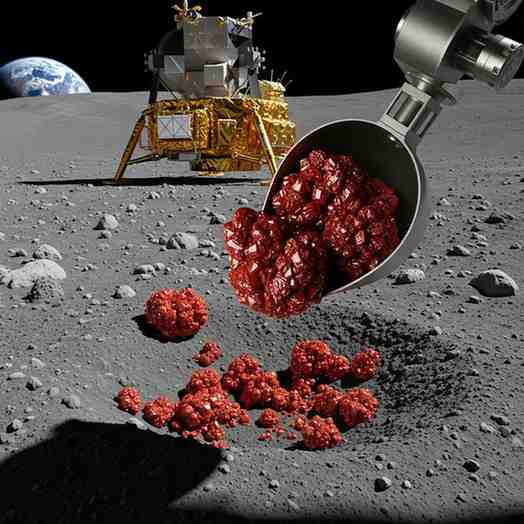
Chang’e-6 Mission Discovers Iron Oxide Crystals on the Moon
China’s Chang’e-6 lunar sample-return mission has revealed a transformative scientific discovery—microscopic iron oxide crystals within lunar soil collected from the South Pole–Aitken (SPA) Basin . The finding challenges conventional understanding of the Moon’s surface chemistry, long believed to be dominated by reducing conditions that prevent the formation of oxidised minerals.
First Direct Evidence of Oxidised Minerals
Analyses of the returned samples identified hematite and maghemite , both highly oxidised iron compounds. Their presence indicates that oxidising processes did occur on the Moon, contradicting earlier assumptions that such minerals were improbable on an oxygen-poor, atmosphere-less body. Researchers described the micrometre-scale crystals as critical evidence of episodic oxidising environments in lunar history.
Impact Events as the Source of Oxygen
Scientists attribute the formation of these iron oxide crystals to ancient, high-energy impacts. Such collisions would have generated temporary oxygen-rich vapour atmospheres , enabling vapour-phase deposition of iron oxides as the vapours cooled. The samples also showed intermediate minerals such as magnetite , supporting links to magnetic anomalies previously mapped across the SPA Basin—one of the most magnetically unusual locations on the Moon.
New Insights into Lunar Evolution
The discovery redefines how scientists interpret lunar magnetic signatures and crustal composition. It suggests that the Moon’s chemical environment was more dynamic than previously thought, influenced heavily by catastrophic impact events. The findings will shape the planning of future missions, especially those targeting regions with complex geological histories.
Exam Oriented Facts
-
Hematite and maghemite detected in Chang’e-6 samples from the South Pole–Aitken Basin .
-
SPA Basin is the oldest and largest impact structure in the Solar System.
-
Iron oxide formation linked to oxygen-rich vapour created by massive impacts.
-
Chang’e-6 returned samples to Earth in 2024 .
Month: Current Affairs - November 18, 2025
Category: Space Technology